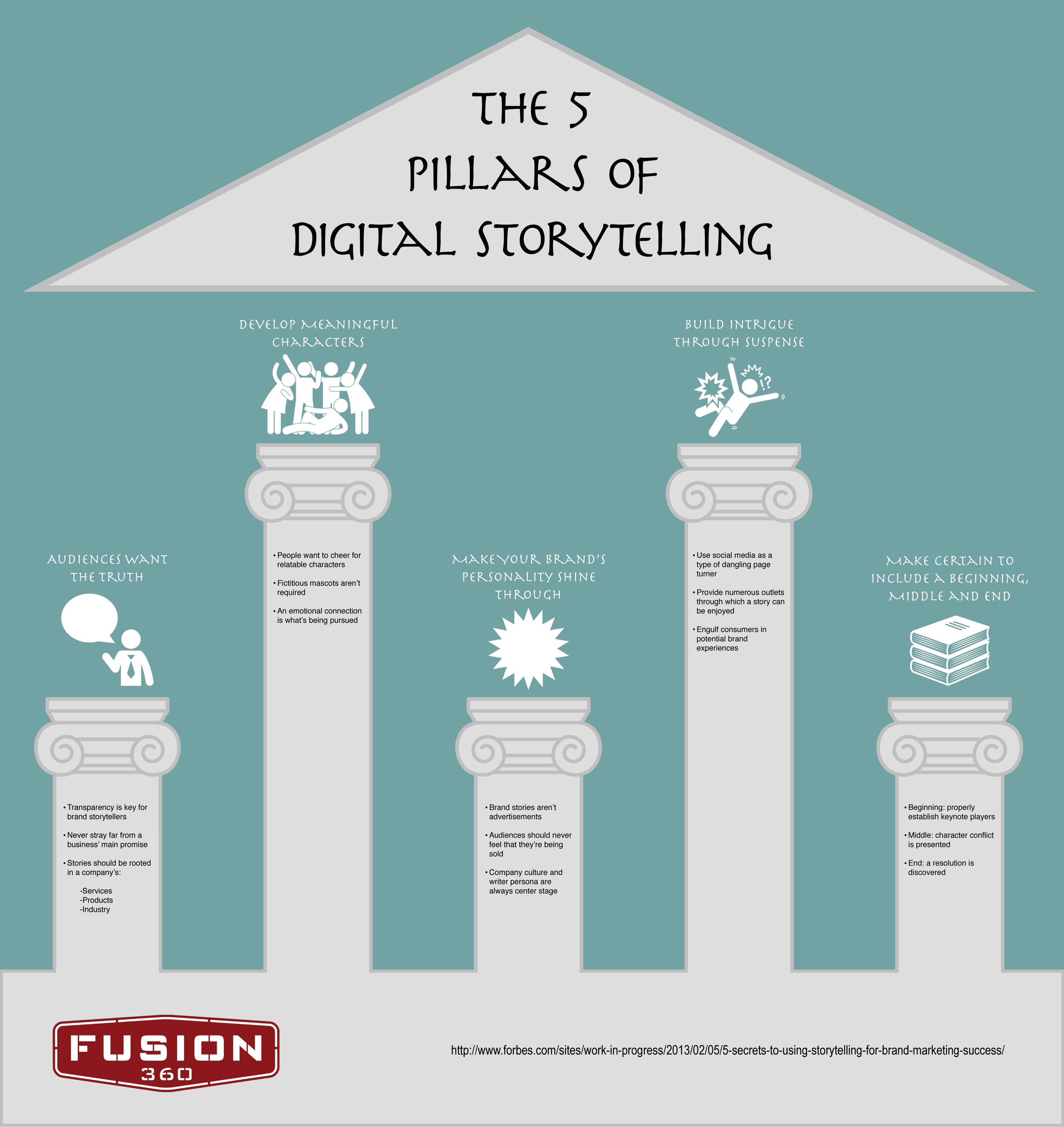Brand storytelling isn’t a new endeavor. In reality, it’s something that traditional marketers have been doing for years. What’s relatively new, however, are the fields of social media and content marketing. Joined at the hip, both industries—falling under the larger canopy of digital advertising—have made brand storytelling an all-encompassing practice.
With so many content marketing specialists competing for social space, great stories—not just good ones—are what earn valuable clicks and build search engine rapport. If you and your marketing firm or agency are struggling to build audience intrigue, it’s never a bad idea to get back to the basics.
No, not what was taught in your Marketing 101 course back in college, but the actual basics of storytelling and writing. Unbeknownst to most, by so doing, engaging brand stories become the norm and less the occasional occurrence.
1) Audiences Want the Truth
If you’re like most Americans, the thought of dealing with a car salesman is enough to make you cringe. It’s not that the people who push new or used cars are bad people, it’s just that everything that’s presented is assumed to be a lie or stretched truth. Nobody likes to feel like they’re being sold, and brand stories—regardless of medium—must keep consumers comfortable.
In all of life’s situations, honesty is the best policy; content marketing is no different. Sure, “stories” are being crafted, but make certain that they’re rooted in the reality of your company’s history, products or industry.
Furthermore, keep things consistent. Once brand stories begin to drift from what audiences come to associate with a business, confusion sets in. Truthfully, confusion, more than just about anything, is the top brand-killing force, at least from a content marketing standpoint.
2) Develop Meaningful Characters
Every great story comes with a team of lovable characters. Just as you and your family love rooting for Katniss Everdeen in The Hunger Games, so too can any money-making entity win over the approval of potential clients. Take Progressive’s Flo, for example. While not upheld by a team of supporting characters, Flo’s success is found in her relatable and quirky nature.
That being said, it’s not imperative that a fictitious character be created for widespread emotional appeal to come about. Buyer personas, real-life clients and employees are also able to present their respective points of view in an advertorial manner.
Speaking of the end goal of brand characters, says Susan Gunelius of Forbes, “The important thing is to create characters that enable your audience to become emotionally connected to them to such an extent that the audience wants to follow their character arcs.”
3) Make Your Brand’s Personality Shine Through
The appeal of social media and content marketing is found in its entertainment value. As opposed to advertisers approaching customers with pamphlets, sales pitches and a series of “incredible limited time offers,” target audiences are allowed to ingest information on their own terms.
Because of this, it’s key that you infuse any and all stories with a dash of brand personality to keep people coming back for more, time and time again. That is, after all, what’s supposed to separate you from the masses, right? Without a writer’s true colors on full display, readers will most assuredly bore quickly and revert to industry competitors who can more fully captivate them.
4) Build Intrigue Through Suspense
Whether it be a blog post or a podcast, do your best to make content a type of reoccurring page turner. Social media can be great for dangling the proverbial carrot in front of the ever-engaged eyes of your brand’s biggest followers. Facebook, Twitter, Pinterest and even email lists are awesome for building intrigue with audiences.
Also, perpetual marketing—in addition to building story suspense—provides content marketing gurus with the ideal opportunity to promote their content through offline and mobile marketing measures.
5) Make Certain to Include a Beginning, Middle and End
Middle schoolers all over the country know that any good story comes fully equipped with a beginning, middle and end. If the aforementioned model is good enough for the world’s greatest works of fiction, it’ll get the job done for your company’s content marketing needs.
In the beginning, a story’s keynote players are established. Next, the middle portion of a brand story brings with it arguably the most important phase: character conflict. Here, a featured dilemma is presented so that a final resolution can take place. Lastly, at the end of a brand story, you guessed it, an audience learns how difficulty has been overcome. The idea is that, as a character’s story arc is developed, public participants enjoy the story and bring others onboard. Such is the exponential power of sound storytelling.
Always remember that content marketing allows consumers to interact with your brand when and where they’d like. With multiple stories which cling to a central brand promise and a number of social outlets to tap into for involvement, brand fans soon translate into hard ROI for companies to appreciate.



